Primary navigation

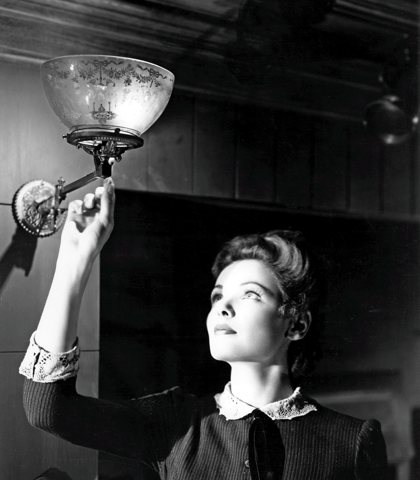
More than just one of the most beautiful actresses in movies, Gene Tierney didn’t so much act as embody the mysterious heroines of three unforgettable 40s films. By Dan Callahan
Laura is more talked about than seen in the first quarter of the 1944 film that bears her name. She has supposedly been murdered, blown away by a shotgun at close range – the kind of blast that destroys a beautiful face beyond all recognition. Mainly, Laura exists as a painting in her apartment that hovers over the detective investigating her murder, a close-lipped type who soon develops a kind of obsession with the dead girl. But then she reappears… and who is she, exactly? Why is everyone in the film so taken with her? Because she is so beautiful, is that all?Jennifer Jones had turned down the title role in Laura – or rather her husband and Svengali, David O. Selznick, had turned it down for her. After reading the script, Gene Tierney had her doubts about it too. Tierney was one of the most beautiful women in movies, but she wondered if she was beautiful enough to play Laura, or embody her. She thought it was a role for Hedy Lamarr – an unquestioned, basically static beauty. Tierney’s own beauty was also somewhat static, except for certain moments when her eyes would flicker with something close to instability. She was like an exquisite porcelain doll with a hairline crack in it, a flaw, or a missing component.
Tierney’s wide-set green eyes were made for the Technicolor process used at Twentieth Century-Fox, which is where she made most of her films. She was clever enough to marry a gifted playboy fashion designer, Oleg Cassini, who often dressed her on screen (the credits would read, “Costumes for Miss Tierney executed by Oleg Cassini”). A mix of the American girl next door and a more Asiatic beauty, Tierney suggested a debutante who might be wearing a sarong under her evening gown. Her nose and mouth were small, and she had an overbite that a childhood dentist refused to correct because he said it might change the shape of her mouth. She was a perfect beauty in a way that could be overwhelming, but a beauty with an overbite – a beauty hiding problems beneath her lacquered, placid surface.
When Tierney accepted the role in Laura, Rouben Mamoulian was the director. But under Mamoulian, nothing seemed to go right with the shoot – down to the all-important portrait of Laura, which had been painted by Mrs Mamoulian. And so producer Otto Preminger insinuated himself into a difficult situation and – after getting the go-ahead from studio chief Darryl F. Zanuck – made himself the director. Preminger had a photo taken of Tierney, and then had paint applied directly to the photo, so that the painting of Laura looked down from the wall as both real and not real – as both photographed and painted, both there and purely imagined. When we see Laura in flashbacks, waspish columnist Waldo Lydecker (Clifton Webb) says that she had “innate breeding”, and that’s true of Tierney, who had a wealthy upbringing and a finishing-school education. (Just listen to the way she pronounces “fiancée” as “fi-awn-cée”, with the emphasis on the first syllable.)
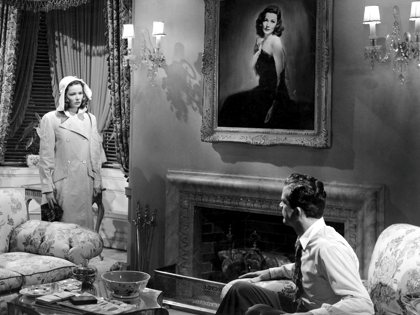
Laura
Tierney’s Laura is a doll that the gay Waldo likes to dress up, and she could be anything: she’s an object of conversation and gossip in Manhattan drawing rooms, a beauty like Slim Keith or Babe Paley, a bauble meant to shine and give off reflected light. When she enters the movie in the present tense, very much alive, Tierney stands there in a white hat that seems to melt down on her head (the hat seems to be swooning for her) and she’s… a blank. A blank that you can read anything onto, though there is a moment, when she’s being interrogated under a stark white light, when she looks like a particularly mean kitty-cat. You can’t really speak of Tierney on an acting level, but as a model, an icon, a still part around which a plot may revolve.
Tierney was always lucky with her directors, starting out with Fritz Lang in The Return of Frank James (1940), where she simpers as a lady newspaper writer. Seeing herself on screen, Tierney thought she sounded like “an angry Minnie Mouse”, and so she started smoking heavily to lower her voice. Crucially, she also watched movie after movie in the studio projection room to get a feel for what worked on screen. As a talented mimic, she soon picked up the all-purpose female sexy-star style of that time, where your lines didn’t necessarily have to make sense but needed to sound interesting, or interested. It was all a question of putting enough air into words at the ends of sentences and making them float and purr. (This was basically an MGM house style, and chief among its proponents was Lana Turner.)
In her early films, Tierney was cast in exotic, sexually enticing parts, like her barefoot hillbilly in John Ford’s Tobacco Road (1941) or her bare-midriffed desert mirage in Sundown (1941), where even unflappable George Sanders looks initially undone by the mere sight of her sauntering into a room. That same year, she received negative reviews for her performance as Poppy in Josef von Sternberg’s The Shanghai Gesture. But from my vantage point, her risky, blatantly sexual performance in that movie is perhaps her best – one of the few times when Tierney really goes all out and plays in a histrionic, often outright goofy fashion.
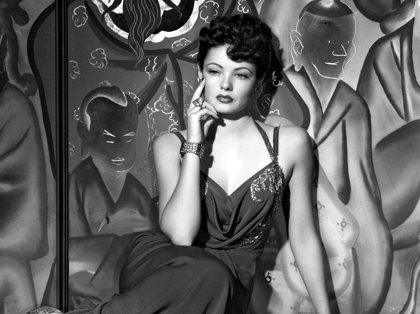
The Shanghai Gesture
The Shanghai Gesture was the first film where her husband Cassini designed her clothes, and he took as many chances sartorially as she took emotionally, costuming his wife in black satin and then in increasingly unbalanced, almost ugly dresses that suit the deterioration of her character into all manner of sexual and alcoholic excess. Poppy is a slumming rich girl looking for thrills, and von Sternberg shoots her as a sexual fantasy figure come to life, activating her so that she’s like a doll going berserk – her all-out physicality in marked contrast to her still-photo face, which the director lights to sculpt and highlight her cheekbones.
When Tierney sneers in the film – and she does a lot of sneering – her rabbity overbite gives her a comic look that instantly vanishes when she closes her mouth and resumes her position on screen as the Sexiest Exotic Doll of All Time. Von Sternberg has great fun watching such an overly refined beauty go so completely to the dogs, and Tierney seems to be enjoying herself too. But the bad reviews must have scared her, so that she retreated into the more careful, almost sleepwalking style she’s known for.
Towards the end of The Shanghai Gesture, Tierney has a close-up where her eyes look vividly nutty, and this nutty look would be rationed out for key close-ups in John M. Stahl’s Leave Her to Heaven (1945), a classic which earned Tierney her only Academy Award nomination. She plays Ellen, a kind of woman’s-magazine Hedda Gabler who fixates on Richard (Cornel Wilde), an almost preposterously stupid male novelist who reminds Ellen of her dead father. Tierney is introduced staring at Wilde in a light-green train compartment – to set off her catlike green eyes. The camera follows her around cautiously, momentously, as she walks up stairs in silhouette or swims like a shark underwater. Stahl is stealthily preparing us for Ellen’s three most outrageous moments.
Scattering her father’s ashes as she rides a horse round and round a New Mexico mesa, Tierney’s face is tense and abstracted as she pours the ashes left, then right, as if to a metronome – and all to Alfred Newman’s thunderous, percussive score. Later – infamously – in a rowing boat, Ellen lets Richard’s crippled brother Danny (Darryl Hickman) drown, sitting there like an impassive, warlike queen behind her fashionable 1940s harlequin sunglasses as he gulps and cries for help. Tierney makes her naturally soft voice sound hard as granite as Ellen talks to Danny before retreating into her silent-executioner mode, her superwoman scorn of Danny’s physical weakness putting her in line with Nazi ideology.
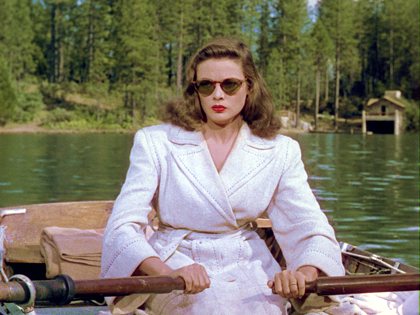
Leave Her to Heaven
Ellen’s unblinking eyes are so green because they’re green with envy, according to the film’s script (which was written by one of the best of all screenwriters, Jo Swerling). But the movie itself is more unsettled about Ellen, more in awe of her, and that has to do with Stahl’s sober handling of her various and supposed outrages – the last of which is the deliberate aborting of her child by throwing herself down the stairs of her home.
“This baby’s making a prisoner out of me!” Ellen cries, and I’m sure that most women who have been pregnant can relate to her feelings of entrapment and the lengths she will go to break free of it. The really shocking thing about this scene is not the tumble down the stairs itself – which we know Ellen is nervy enough to do – but the preparations she makes first in the mirror of her bedroom, preening at her reflection and fixing her nightgown, so we realise that this is a woman who wants to be as attractively attired and presentable as possible when she’s found at the bottom of the stairs. Now that’s vanity!
A more obvious ‘actress’ type than Tierney would have underlined Ellen’s pathology, or indicated her evil. Tierney herself said that she viewed Ellen as “insane”, but she’s much more disturbing in Leave Her to Heaven because as an actress she isn’t technically able to make choices like that. Instead, she brings her own image and face and body to the role and embodies it as simply as possible, and this very simplicity makes Ellen ambiguous, taunting, unresolvable. When Ellen gets angry at her husband and lashes out at him, Tierney opens her face so that it looks wild, uncontrollable, and then she closes it so that she looks helpless. The girl can’t help it! Signals like this might have to do with the fact that Tierney herself was a lifelong sufferer of mental illness, which really flared up in the early 1950s and brought her career to a halt by 1955, when she entered a series of mental institutions and received a round of shock treatments that destroyed parts of her memory.
Mental instability wasn’t the only cross she had to bear. In 1943, a pregnant Tierney went to the Hollywood Canteen for a one-off appearance; soon afterwards she contracted German measles, which caused her daughter to be born blind, deaf and severely handicapped. Tierney’s anguish over her daughter’s condition was compounded when a female fan later approached her to tell her that she had broken her quarantine for German measles to see Tierney at the Hollywood Canteen. Everyone always said that Tierney was even more beautiful in person than in front of a camera, and this woman had wanted to see her in the flesh, not on the screen. Stunned, Tierney said nothing and just walked away. “After that I didn’t care whether ever again I was anyone’s favorite actress,” she wrote in her pained 1979 autobiography Self-Portrait.
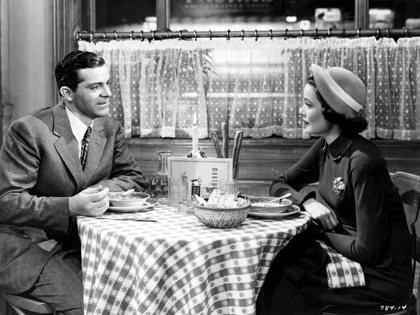
Where the Sidewalk Ends
Otto Preminger stayed loyal to Tierney even as her personal problems began to engulf her. He used her in three more films after Laura: in the demanding role of a kleptomaniac who falls under the spell of hypnotic charlatan Jose Ferrer in Whirlpool (1950); as another woman mixed up with murder in Where the Sidewalk Ends (1950); and finally in a modest comeback role as a Washington hostess in his political epic Advise & Consent (1962), where she walks through his long takes as if on eggshells and holds her head high and still so that you can feel how scared and nervous she is. As an older woman, her voice grew dramatically lower because of her cigarette habit. Once she’d been reduced to slapping Carol Lynley and calling her a tramp in Jean Negulesco’s The Pleasure Seekers (1964), Tierney decided to retire into the comfort of her second marriage to a kindly Texas oil baron.
She married well, at the very least. In the late 1940s, when her marriage to Cassini was on the rocks, she had also carried on a serious affair with a young John F. Kennedy. She wanted to marry him, but as a Catholic and a future political candidate he steered clear of marriage to her. Later on, when Kennedy became president, Cassini was hired to provide the wardrobe for his wife Jacqueline. Tierney herself wears a pillbox hat in her first scene in Advise & Consent, so she certainly merits mention as a footnote and cross-reference to any Kennedy history, as an early version of Jackie – unsuitable as a married woman, an actress, and mentally precarious, but a solid trial run for what JFK wanted visually.
After Tierney lost her second husband in the early 1980s, Cassini said she used to call him in the middle of the night and talk as if it were still 1943. But she can hardly be blamed for wanting to live in the past. When she was interviewed for French TV in 1985, she was asked if she enjoyed watching herself on screen. No, she replied, not anymore, because she still expected to look like she did in the 1940s. “Every morning, it’s a surprise!” she said, laughing ruefully. She died in 1991.
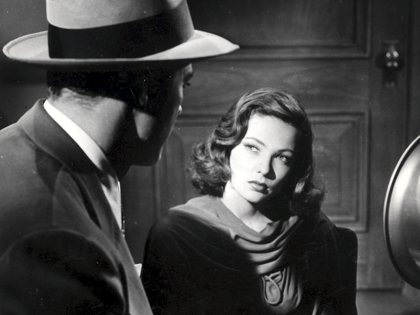
Laura
When it comes to Gene Tierney, I think of certain colours, especially the green of her eyes and the fire-engine red of the lipstick on her lips. (In the last scene of The Shanghai Gesture, von Sternberg had her lips painted almost white for a particularly depraved effect.) I think of the clothes she wore: the shoulder pads and wide-bottomed women’s slacks of the 1940s, Laura’s Salvador Dalí hats, Ellen’s chinoiserie-style dressing gown – and of course those sunglasses she puts on to murder poor Danny.
But I also think of music: not just David Raksin’s famous theme song for Laura, which later had lyrics attached by Johnny Mercer about how Laura was “the face in the misty light”, but also the romantic Bernard Herrmann score for Joseph L. Mankiewicz’s The Ghost and Mrs. Muir (1947), full of churnings and crescendos and tributes to the feelings Gene Tierney’s face inspires. As an actress in The Ghost and Mrs. Muir, Tierney is only competent; she plays her widow by the sea mainly on one note of self-satisfied defiance. But to many moviegoers, Tierney is the embodiment of a certain kind of 1940s movie experience – someone of whom it can plausibly be said, as Mercer’s lyrics have it, that maybe she was only a dream.
‘Laura’ is rereleased in cinemas on 24 February 2012
Remain in light: B. Kite on Mulholland Dr. and the cosmogony of David Lynch (March 2012)
Jean Simmons obituary by Philip Kemp (March 2011)
Von Sternberg - six chapters in search of an auteur: David Thompson on the master of light’s films with Marlene Dietrich (January 2010)
Impulse: David Thomson on Otto Preminger (May 2005)